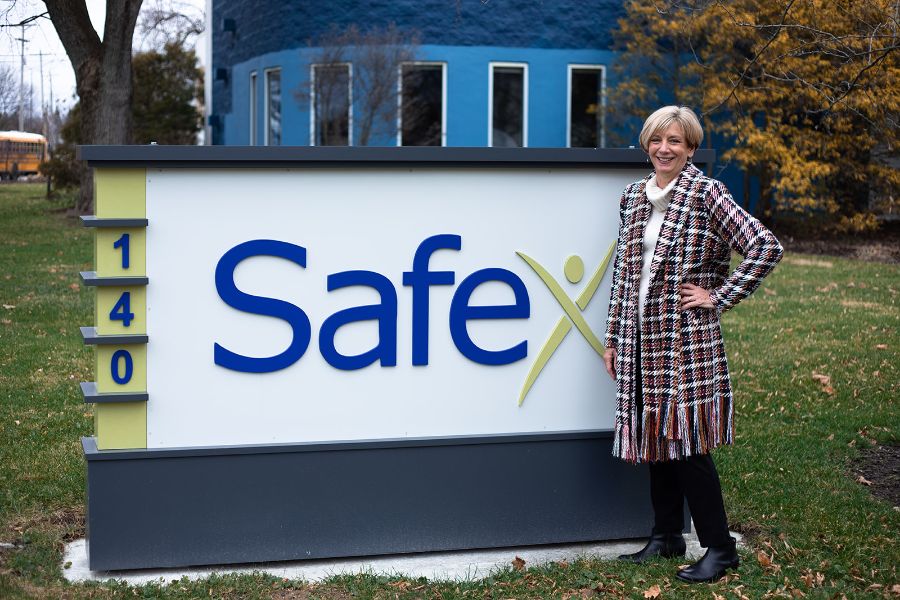Contributor: Dianne Grote Adams, CIH, CSP, CPEA, FAIHA
President and Founder of Safex, Inc.

This article was originally published in the Autumn 2021 issue of VPPPA’s quarterly magazine, the Leader.
As health, safety and environmental (HSE) professionals, we recognize that safety is good business. While we’ve spent years honing our technical skills, we often don’t spend time developing our business acumen and communication and leadership skills. I consistently assess my journey as an HSE leader and look for opportunities to improve my effectiveness.
When I sat down years ago to assess my strengths using the Clifton Strengths assessment, I learned that my biggest one is being a “learner.” This means I have a great desire to learn and want to continuously improve. I am continually reading and listening to podcasts to develop my soft skills. John C. Maxwell, Marcus Buckingham, Gallup, and Simon Sinek are my primary resources, so far. I discovered having a strong business understanding and improving my leadership and communication skills have enhanced my effectiveness as an HSE leader. Plus, I just love the process of learning about new concepts.
Recently, I listened to Simon Sinek’s “How to Stop Holding Yourself Back.” It was a great refresher on the inability for the brain to comprehend the negative. Sinek illustrated this point by telling the audience to not think of an elephant. And guess what, you, me, and the audience couldn’t comprehend the negative, so we all thought of elephants. I’m using his advice by avoiding the words “no” or “don’t do that” when observing unsafe behaviors. Instead, I’m practicing verbalizing what the desired behavior should be. This also works at home with children!
One thing I’ve learned over time is that building a culture of safety requires us to sell our ideas before we can lead change. Influence and trust are necessary fundamentals to relationships that are built upon communication. Effective communication requires us to know our audience, including those who we must influence, and discover what motivates them.
Not everyone naturally shares the HSE professionals’ commitments to mitigating risk, so we may have to identify other motivating factors to get their support. Our coworkers often have competing motivations or don’t recognize the risk that is obvious to us. It is our responsibility to educate them on the risk and get their support by appealing to their interests and motivations. That requires us to learn about different styles of communication, and how we can address our audiences in a variety of methods.
Communication is key
A quick Google search will turn up many ways to assess your communication style and find what motivates you. My company recently used True Colors® to assess our personalities and communication styles to improve our team’s effectiveness. In an ideal world, there’s a huge benefit in conducting a company-wide communication and personality assessment, but if that’s not possible, assessing your own personality and communication style is very beneficial. You’ll learn how others perceive your approach and identify opportunities for you to share information in a way that those with different motivators can respond positively to your message.
For example, I’m an analytical and logical communicator and some of my coworkers don’t respond to my bulleted approach to speaking and writing. They want more information, more background, as well as more personal connection. While I don’t naturally communicate in their preferred way, I have learned to add context and stories to my bullets to get them to engage. So, when I have an important message to share, I must take a little extra time to prepare the message considering the various communication styles at my company. In some cases, I have a short, bulleted version and a long version with context to appeal to employees with different communication styles. Understanding different communication styles and how people respond is worth the time.
Speak in their language
Understanding where our business leaders come from is crucial for effectively communicating the value of a safety culture. Business leaders are measured and motivated by financial performance, such as return on investment (ROI) and the wise use of resources, and meeting objectives. They must see the ROI and value in what is being proposed to respond positively. Once I understood that, I discovered that I must explain the HSE needs in these terms. Some executives’ motivators are different than mine, not wrong or right, just different. I began to explain accident costs in terms of product produced. Using the profit of our product, I calculated the costs and then visually shared pictures of the amount of product we put in the dumpster to pay for the costs of an incident. That visual helped our production team recognize the value in risk mitigation because they knew how many resources it took to make that product. It was no longer just about people getting hurt because we appealed to their production and financial focus.
Business leaders also want to see a plan for implementation. Most business leaders’ plates are very full, and they don’t appreciate a problem being presented without a proposed resolution. I realized it’s my job to communicate the ROI and value of an HSE investment, as well as the plan to implement the request, including the required resources. Once I learned to present requests in that manner, I found decisions came more quickly.
Hone the power of influence
As HSE professionals, we must influence the behaviors of our teams to reduce risk. Influence is an outcome of effective leadership. Since most HSE professionals influence beyond their direct reports, they have the obligation to be effective leaders. In “Developing the Leader Within You”, the author, John C. Maxwell, explains that influence is a skill that can be developed. He goes on to explain that once we are beyond the first level of leadership, a level he refers to as positional leaders, we become more influential. To grow as a leader, we must develop relationships. As you develop relationships, people begin to follow because they want to and because of what you have accomplished for the organization. That is when change towards a culture of safety can occur.
And in the book “First Among Equals”1, the authors make it clear that our effectiveness depends more on our people skills than our technical skills. I’m sure you have heard “People don’t care how much you know until they know how much you care”2, our challenge, as HSE professionals, is to continue to develop our people skills.
Not long ago, I received the ultimate compliment from a large client. He said, “Thanks for your leadership and commitment to our organization. Your passion and ability to effectively summarize is a gift.” It was apparent that continuing to hone my soft skills and understand their business operations provides an opportunity to influence their journey to a culture of safety. That’s what HSE leadership is all about.
About the Author
Dianne Grote Adams, MS, CIH, CSP, CPEA, FAIHA, is the President and Founder of Safex, Inc., an occupational health, safety, and environmental firm in Westerville, Ohio. Her passion is mentoring leaders to positively influence their safety culture.

References
1 First Among Equals, Patrick J. McKenna and David H. Maister
2 Theodore Roosevelt